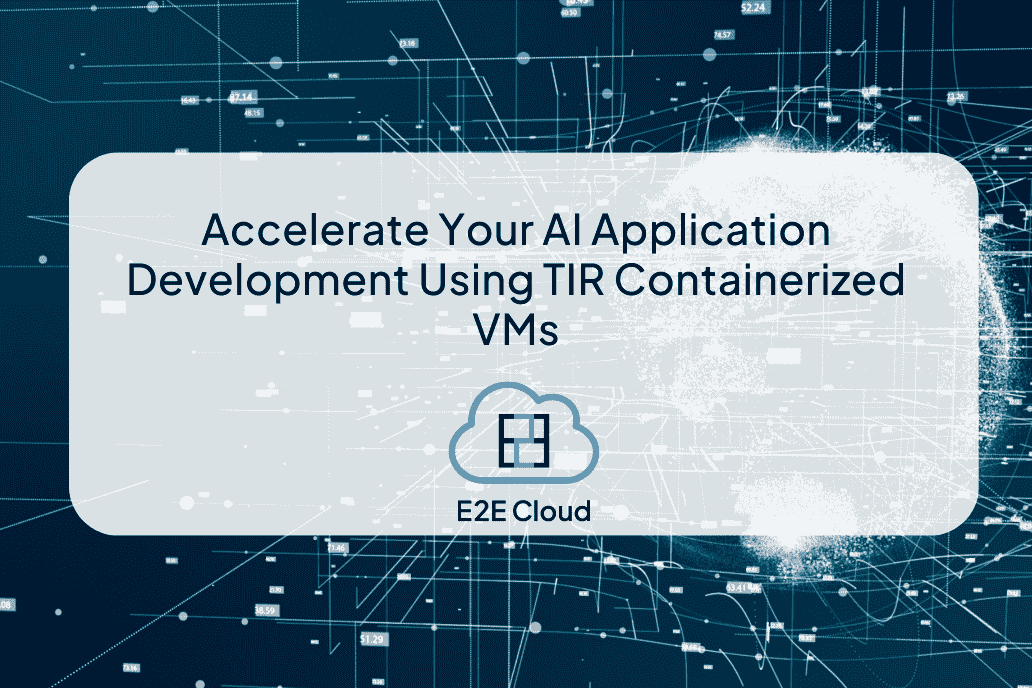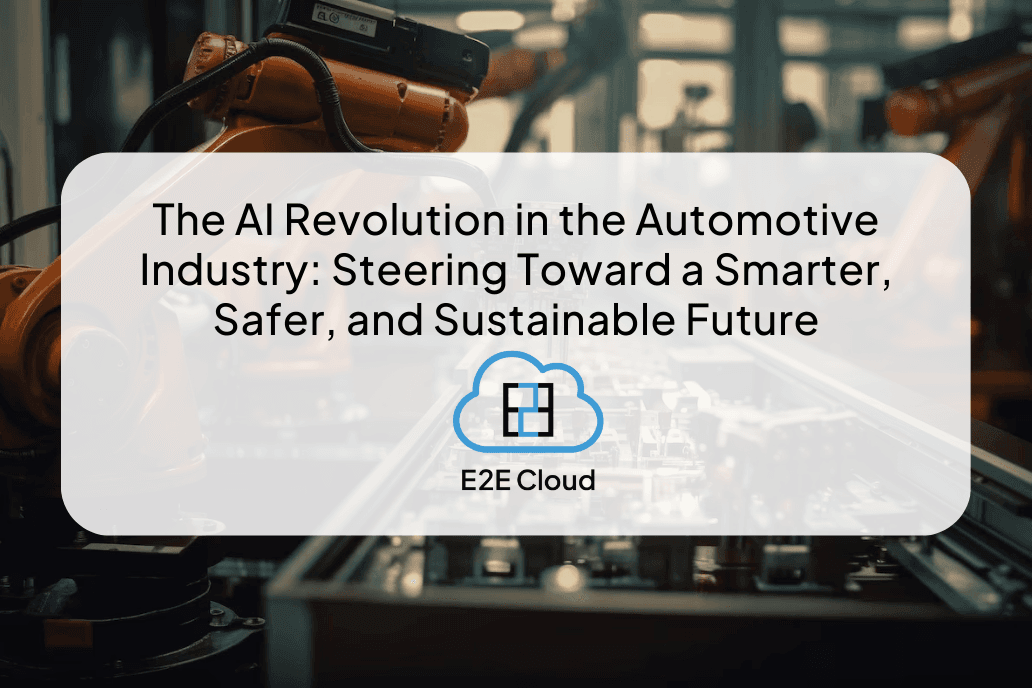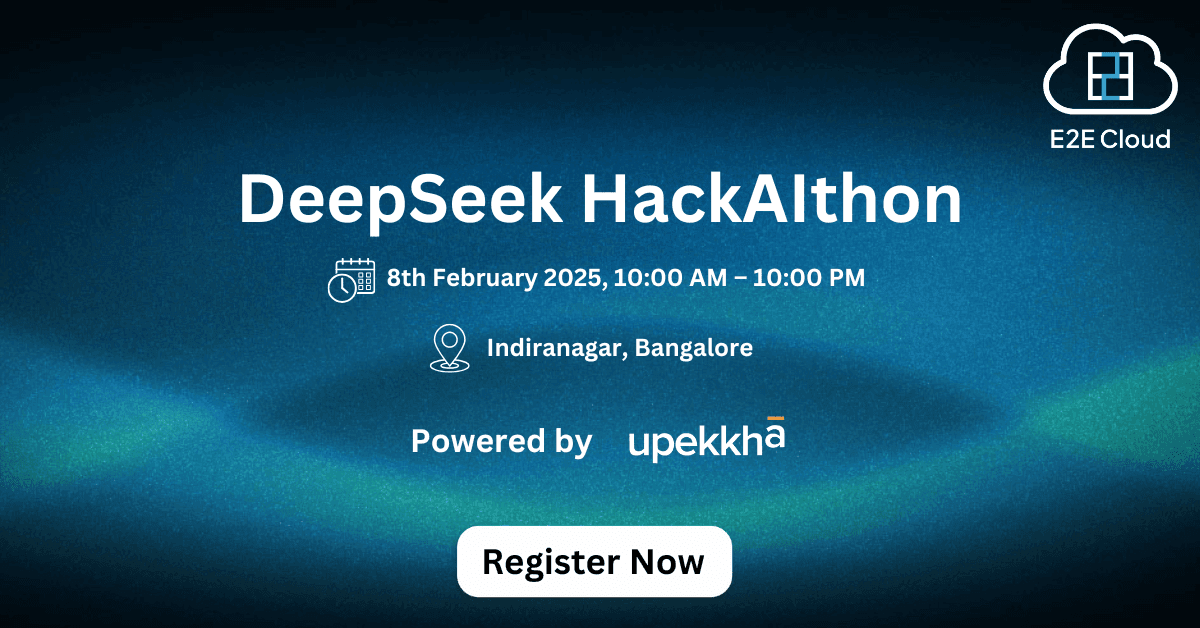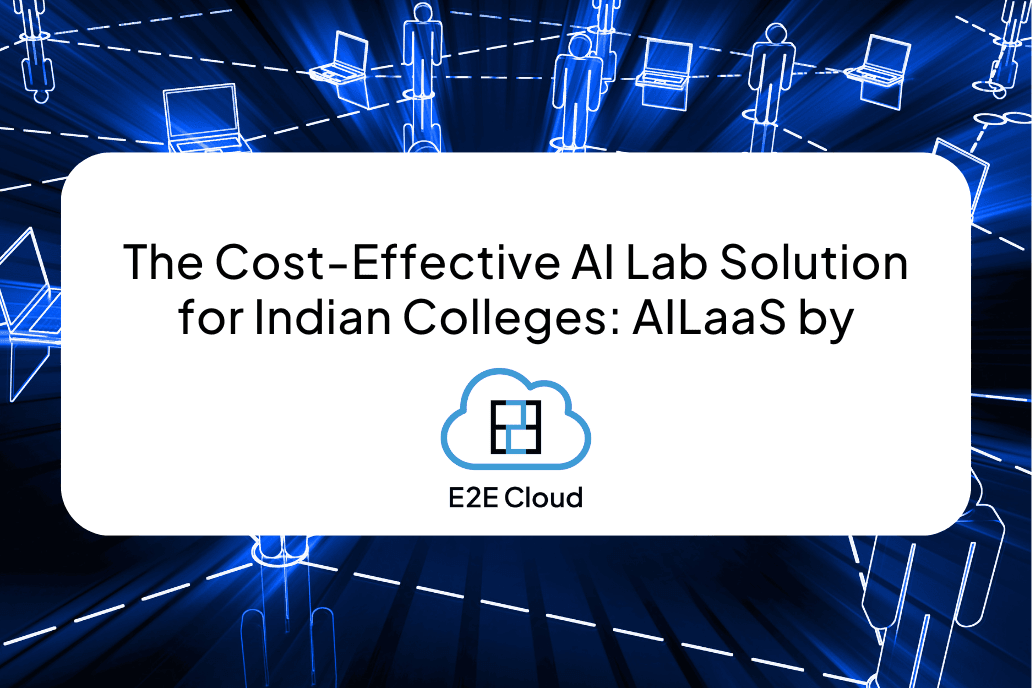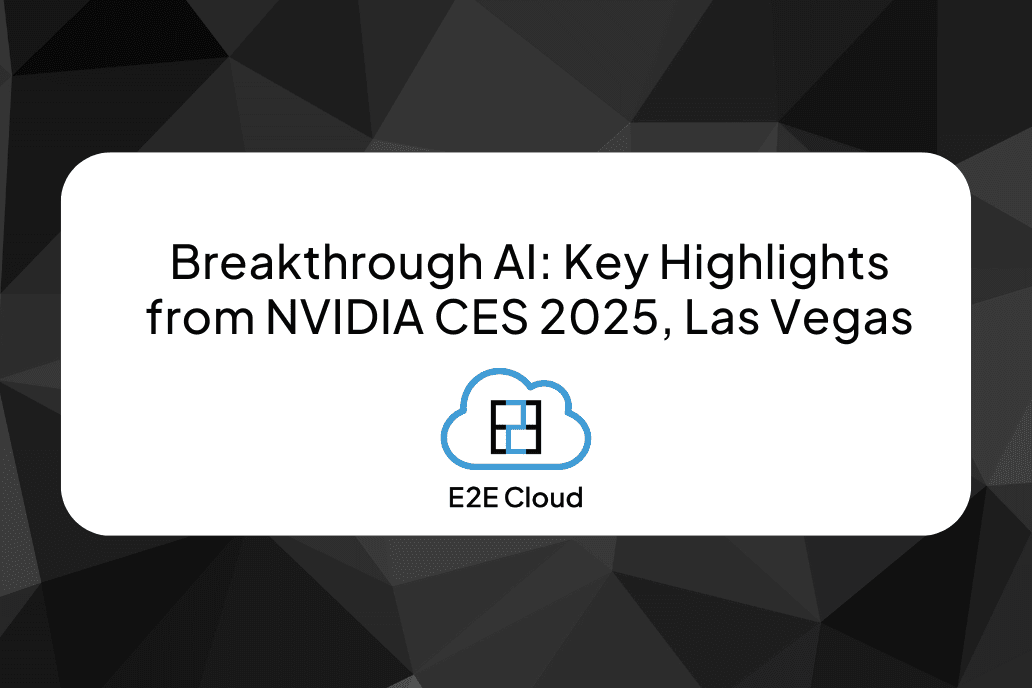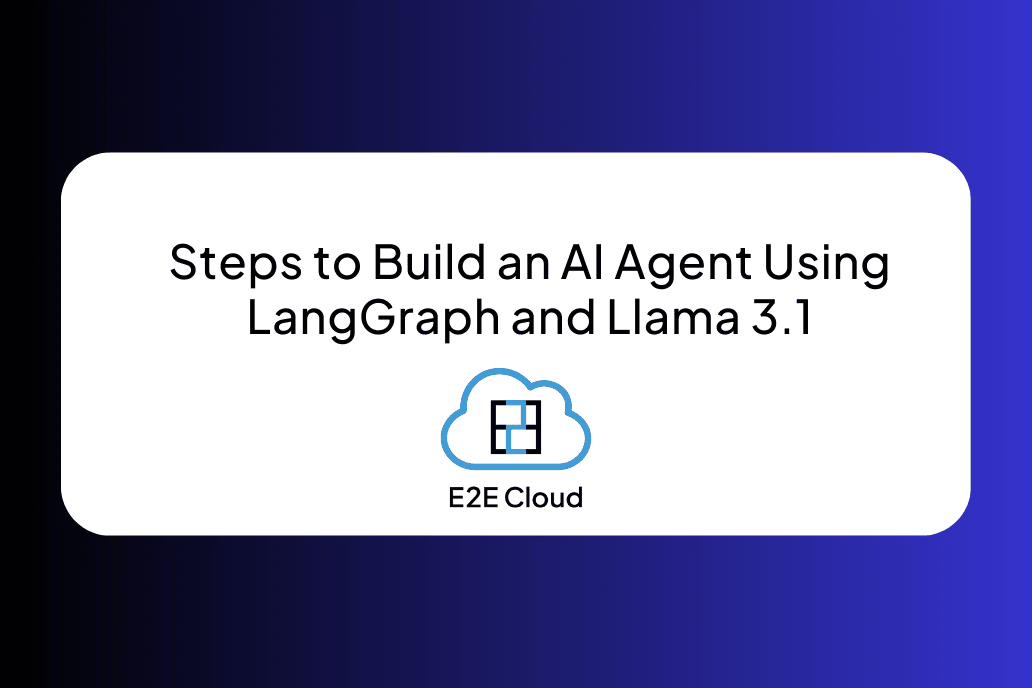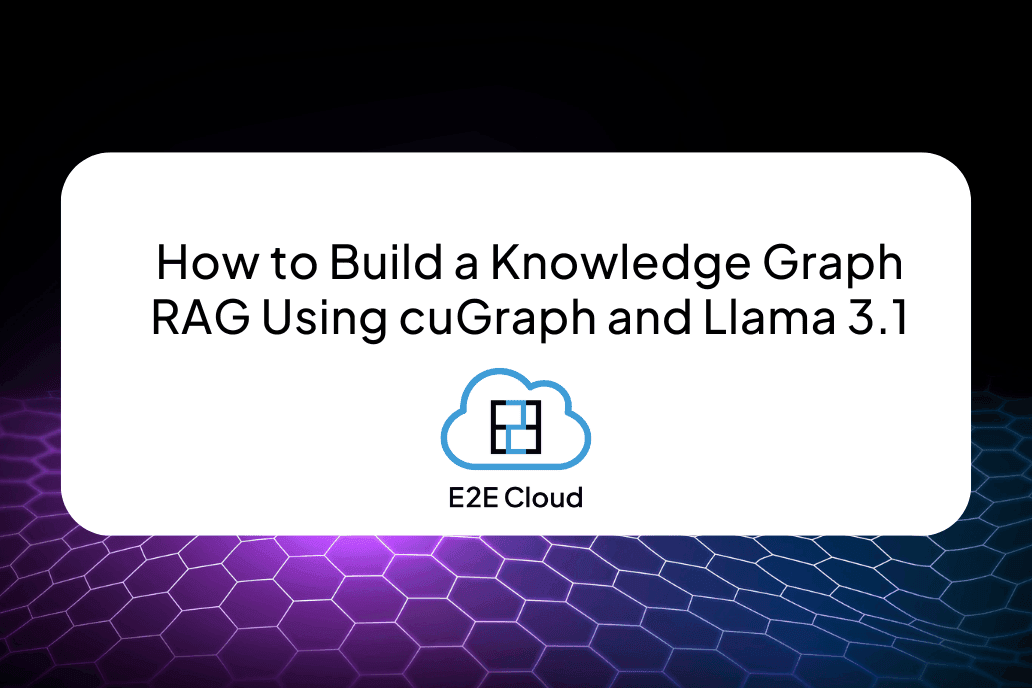If you're building applications using large language models (LLMs), large vision models (LVMs), or computer vision models, you know that selecting the right GPU can make a world of difference to your project’s success.
Cloud GPUs like the H200, H100, A100, L40S, and L4 each offer unique capabilities, and knowing which one suits your needs best can maximize both efficiency and cost-effectiveness. These GPUs significantly differ in their underlying architectures, available RAM, and therefore impact the model training or inference steps significantly.
In this article, we will break down their technical specs, use cases, and underlying architectures, so you can decide which GPU is right for your workload.
Cloud GPU Architectures
Before we dive in, it’s important to understand the underlying architecture differences between the cloud GPU models we will compare.
Hopper Architecture
The Hopper architecture, used in the H200 and H100 GPUs, introduces significant advancements to support large-scale AI and HPC workloads. Built with over 80 billion transistors using the TSMC 4N process, it features the fourth-generation Tensor Cores with a new Transformer Engine that accelerates the training of AI models, specifically enhancing FP8 and FP16 precision capabilities. The Hopper Tensor Cores have tripled the floating-point operations per second (FLOPS) for TF32, FP64, FP16, and INT8 data types compared to the Ampere generation, providing significant speed-ups for training and inference tasks.
Key innovations in Hopper include fourth-generation NVLink, which allows up to 900 GB/s bidirectional communication between GPUs—7x the bandwidth of PCIe Gen5. The new Multi-Instance GPU (MIG) allows the Hopper GPUs to partition GPU resources into several smaller, isolated instances, providing flexibility in managing multiple workloads. Hopper also supports NVIDIA Confidential Computing, which ensures that data remains secure even while in use, adding a new level of data protection for AI and HPC tasks.
The H100 GPU powered by Hopper architecture offers improved per-SM computational power, delivering up to 9x faster AI training and up to 30x faster inference compared to the A100, due to innovations like the new DPX instructions and higher GPU clock speeds. This makes it highly effective for workloads such as genomics, large language models, and other HPC applications.
Ampere Architecture
The Ampere architecture powers the A100 GPU, which is well-regarded for its versatility across both training and inference workloads. Ampere introduces third-generation Tensor Cores that support mixed precision (FP64, FP32, FP16, and INT8), making it ideal for a wide range of AI workloads, from precise computations to rapid inferencing.
Ampere GPUs feature Multi-Instance GPU (MIG) technology, which allows the A100 to be split into multiple smaller instances, enabling the execution of several workloads simultaneously. This flexibility is particularly useful for environments that need to balance training, inference, and testing. Ampere also integrates NVLink for high-speed inter-GPU communication, essential for scaling distributed workloads.
The Ampere architecture brings improvements in processing rates, with peak performance of up to 19.5 TFLOPS (FP64), 312 TFLOPS (FP16), and 624 TOPS (INT8). These advancements make it a solid choice for mixed workloads, offering a combination of power and cost-efficiency.
Ada Lovelace Architecture
The Ada Lovelace architecture underpins the L4 and L40S GPUs, and it is optimized for a combination of video processing and AI workloads, such as real-time video analytics and edge AI applications. Built with fourth-generation tensor cores, Ada Lovelace GPUs offer enhanced NVENC/NVDEC engines, providing efficiency for multimedia workloads that require both graphics and AI capabilities.
Energy efficiency is a key focus for the Ada Lovelace architecture, making it well-suited for edge deployments where power constraints are critical. It also supports SR-IOV virtualization, allowing multiple virtual functions, which is beneficial for cloud-based environments and virtualized deployments. This architecture aims to balance performance with energy consumption, particularly for use cases that require real-time processing.
Comparison of Cloud GPUs
Now, let’s look at all the four GPUs and how they match up. You should look at the GPU RAM, the clock speed, and the FP64/FP16 performances to truly understand the differences.
H200: Performance Beyond Boundaries
The H200 is one of the newest cloud GPUs, built to push the boundaries of AI and machine learning. The H200 uses the Hopper architecture, which provides significant improvements in performance compared to its predecessors. With advanced tensor cores and enhanced NVLink for faster communication, the H200 is optimized for deep learning model training, particularly when dealing with extremely large datasets.
- Architecture: Hopper
- Memory: 141 GB HBM3e with 4.8 TB/s bandwidth, making it ideal for large-scale AI and high-performance computing (HPC) workloads.
- Enhanced Tensor Cores: The H200 provides advanced tensor core capabilities for faster deep learning calculations, particularly beneficial for large language models (LLMs).
- NVLink: Offers enhanced bandwidth of 900 GB/s for faster GPU-to-GPU communication.
- Multi-Instance GPU (MIG) support: Allows for partitioning into up to 7 instances, optimizing resource usage.
- GPU Clock Speed: 1.75 GHz
- FP64 Performance: Up to 67 TFLOPS
- FP16 Performance: Up to 1.5 PFLOPS
- Transformer Engine: Supports FP8, enabling optimal LLM training and inference.
The NVIDIA H200 is the first GPU to offer 141 gigabytes (GB) of HBM3e memory at 4.8 terabytes per second (TB/s)—nearly double the capacity of the NVIDIA H100 Tensor Core GPU with 1.4X more memory bandwidth. This larger and faster memory accelerates generative AI and LLMs, while advancing scientific computing for HPC workloads with better energy efficiency and lower total cost of ownership.
If you're working on projects involving LLMs like the Llama 3.1 series or LVMs like the Llama 3.2 series, the H200 is a great fit. It has the memory bandwidth and processing power required to handle the intensive data streams that these applications demand. Its cutting-edge technology also makes it ideal for HPC (High-Performance Computing) workloads, providing unmatched computational power.
How It Helps AI/ML Developers: For AI/ML developers, the H200 offers the ability to train large-scale models faster and more efficiently. The enhanced tensor cores are especially beneficial for those developing advanced neural networks, as they allow for quicker iteration cycles. This means you can experiment with different model architectures and hyperparameters without being held back by hardware limitations.
Open Source LLMs Suitable for H200 Training:
- Llama 3.2 series
- Llama 3.1 series
- BLOOM
- Falcon LLM
- Mistral
These models can benefit from the enhanced tensor cores and memory bandwidth of the H200, allowing for efficient training and scaling to handle large datasets and complex architectures.
H100: The Reliable Powerhouse
The H100 GPU, also powered by the Hopper architecture, is a tried-and-true workhorse. Though it may not have some of the extreme enhancements seen in the H200, it still offers remarkable capabilities, making it the ideal choice for most AI training and inferencing tasks.
Equipped with multi-instance GPU (MIG) technology, the H100 allows you to partition GPU resources effectively, which is great if you’re running multiple smaller-scale models simultaneously. If you're building cloud services that need scalability and flexibility, the H100’s MIG capability lets you get the most out of a single GPU by efficiently handling multiple workloads. It's perfect for those projects where power and versatility are key but where budget or efficiency might be a consideration compared to the newer H200.
Technical Details of the H100:
- Architecture: Hopper
- Memory: 80 GB HBM2e, with a memory bandwidth of 2.04 TB/s.
- Multi-Instance GPU (MIG) Support: Yes, enabling resource partitioning for various workloads.
- Enhanced Tensor Cores: The H100 features fourth-generation tensor cores, which provide a significant boost to deep learning operations, particularly for LLMs.
- NVLink: Supports high-speed GPU-to-GPU communication with 600 GB/s bandwidth via NVLink.
- GPU Clock Speed: Base clock of 1.09 GHz, with a boost up to 1.755 GHz.
- FP64 Performance: Up to 48 TFLOPS.
- FP16 Performance: Up to 1.6 PFLOPS.
How It Helps AI/ML Developers: The H100’s MIG technology is a game-changer for developers who need to run multiple experiments in parallel. It allows you to allocate GPU resources dynamically, meaning you can optimize usage based on the specific needs of each task. This is particularly helpful in environments where you need to balance training, inference, and testing without compromising on performance.
A100: The Versatile Choice
The A100 is based on the Ampere architecture and has been a staple for many AI and ML workloads. Its versatility is its defining feature, providing powerful acceleration for everything, from deep learning to data analytics and HPC applications.
The A100 offers support for both FP64 for HPC and FP16/INT8 for AI workloads, which means it excels at both precision-driven scientific computing and faster, less precision-critical AI inference tasks. If you’re running mixed workloads—say, an AI training pipeline alongside data preprocessing—the A100 provides a solid combination of power and flexibility. It’s also a good match for users who need a balance between performance and cost, offering excellent capabilities without the higher price tag associated with newer models like the H200.
Technical Details of the A100:
- Architecture: Ampere
- Memory: 40/80 GB HBM2
- Enhanced Tensor Cores for efficient AI training.
- Multi-Instance GPU (MIG) support for partitioning.
- NVLink for high-speed GPU-to-GPU communication.
- GPU Clock Speed: 1.41 GHz
- FP64 Performance: Up to 19.5 TFLOPS.
- FP16 Performance: Up to 312 TFLOPS.
- INT8 Performance: Up to 624 TOPS.
How It Helps AI/ML Developers: For AI/ML developers, the A100 is an all-rounder that enables you to tackle a wide variety of tasks without needing multiple specialized GPUs. Its support for mixed precision allows for faster training times without sacrificing accuracy, which is crucial when developing models that need both speed and precision. It’s also ideal for data scientists who need to switch between different types of workloads frequently.
L40S: Optimized for Multi-Workload Performance
The L40S is a powerful GPU, built on the Ada Lovelace architecture, optimized for AI training and inference, 3D rendering, and multimedia streaming. It provides substantial acceleration for LLM inference and training, video applications, and graphics-intensive workloads. With enhanced NVENC and NVDEC capabilities, it is perfect for real-time video processing, transcoding, and AI-powered video analytics, making it a top choice for developers building AI-based video applications or platforms requiring real-time performance, such as gaming and interactive services.
Technical Details of L40S:
- Architecture: Ada Lovelace
- Memory Type: 48 GB GDDR6 with ECC.
- Memory Bandwidth: 864 GB/sec
- Tensor Cores: Fourth-generation Tensor Cores (568 cores).
- PCIe Support: PCIe Gen4 x16 interface.
- SR-IOV Virtualization: Supported with up to 32 virtual functions (VFs).
- CUDA Support: CUDA 12.0 or later.
- Video Processing: 3x NVENC and 3x NVDEC, with AV1 encoding/decoding for AI-powered video analytics.
- Energy Efficiency: Provides up to 5X higher inference performance compared to previous generations.
How It Helps AI/ML Developers:
For developers working on video analytics or vision applications, the L40S offers specialized capabilities for implementing real-time AI features. Its enhanced encoding and decoding capabilities reduce computational load and latency, allowing developers to focus on sophisticated analytics algorithms. It’s also a robust choice for LLM training, generative AI, and 3D rendering, making it suitable for diverse AI and multimedia workloads.
This GPU is designed for multi-workload acceleration, making it flexible enough to handle tasks ranging from AI training to media streaming.
L4: Lightweight, Energy-Efficient Solution
The L4 GPU, also built on the Ada Lovelace architecture, is designed with energy efficiency in mind. It’s ideal for workloads that need a balance between performance and power consumption, such as edge AI, real-time inference, and lightweight machine learning.
The L4 is your go-to if you're deploying AI inference workloads with lightweight models. It can handle a range of applications, from speech recognition to image classification, but without the costs.
Technical Details of L4:
- Architecture: Ada Lovelace
- Memory Type: GDDR6
- Memory Size: 24 GB
- Memory Bandwidth: 300 GB/sec
- PCIe Support: PCIe Gen4 x16 interface.
- CUDA Support: CUDA 12.0 or later.
- SR-IOV Virtualization: Supported with up to 32 virtual functions (VFs).
- Enhanced NVENC and NVDEC for AI-powered video analytics.
- Energy Efficiency: Delivers up to 120X higher AI video performance compared to CPU-based solutions
How It Helps AI/ML Developers: For developers focused on lightweight AI inference, the L4 provides the perfect mix of performance and capability. It allows you to deploy AI models in environments with limited sizes.
Summary of Technical Specs
Here’s a quick comparison of the core specs:

Which One Should You Choose?
- For LLM Training and HPC: Go for the H200 or H100 if your workloads are heavy and require top-tier performance.
- For Versatile AI and Data Processing: The A100 is ideal for mixed workloads and those who need both precision and speed.
- For Media AI and Vision Applications: The L40S is your best bet, offering optimizations specifically for video workloads.
- For Lightweight Tasks: Choose the L4 for lightweight inference tasks, especially where large models aren’t necessary.
Here is a list of the top open source LLMs as of now, and their sizes in terms of parameters.

To Summarize
Understanding these GPUs and their unique features helps you leverage the right tools for your specific workload. Whether you're building the next generative AI model or fine-tuning computer vision models, there's a cloud GPU that perfectly suits your needs. To get started, sign up to E2E Cloud.

